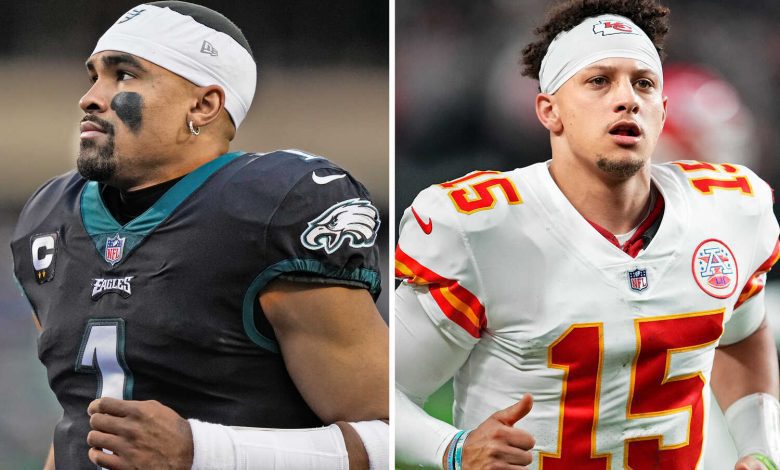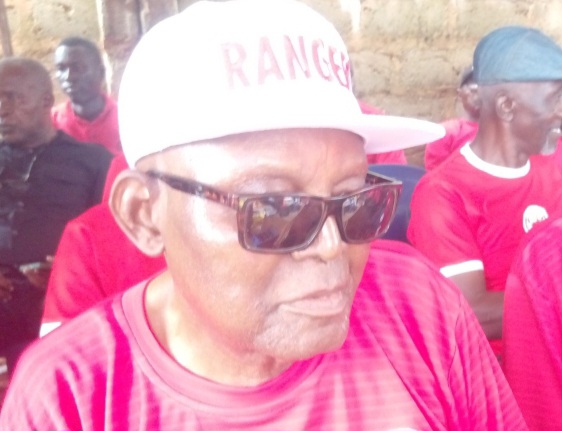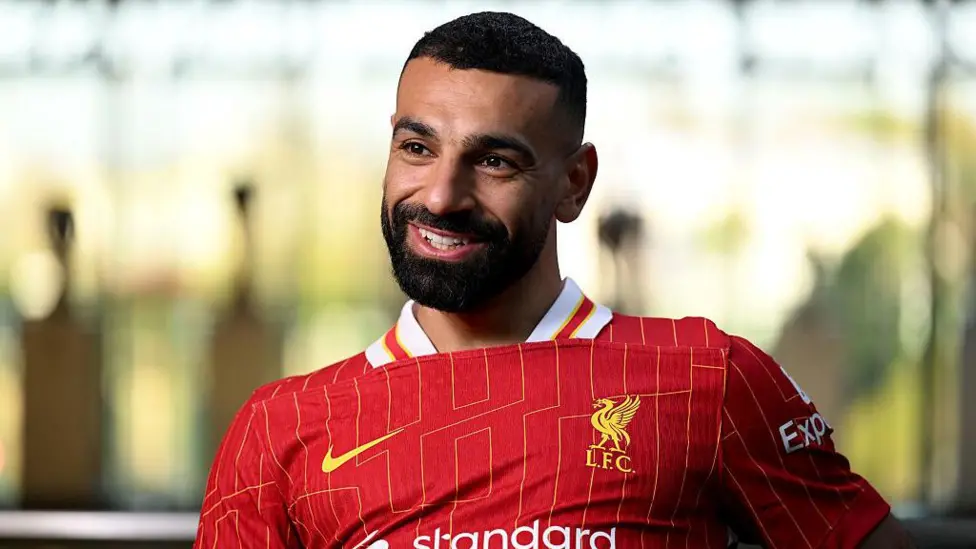
Onree Jackson was a star quarterback at Alabama A&M, a historically Black university, when the Boston Patriots drafted him in the fifth round in 1969.
Jackson had an ideal 6-foot-5, 220-pound frame for a quarterback, and the Patriots’ personnel director said he was talented enough to become the Willie Mays of pro football. But the team’s new coach had different ideas. Jackson was cut early in his first training camp after he declined to switch to a position on defense. He never appeared in a game, becoming part of a lost generation of Black quarterbacks.
“All I was looking for was an opportunity and a chance,” Jackson, 76, said in a phone interview. “I figured that I could make it, and I didn’t know that the game was more than just your athletic talents. Your ability as a quarterback had to match with the social norms of the time.”
The history of Black quarterbacks in professional football is often charted in firsts: Marlin Briscoe starting a game in 1968, James “Shack” Harris winning a playoff game in 1974, Doug Williams winning a Super Bowl in 1988. Sunday’s Super Bowl in Glendale, Ariz., will be the first to feature two African American starting quarterbacks — Patrick Mahomes of the Kansas City Chiefs and Jalen Hurts of the Philadelphia Eagles.
But these firsts carry a mixed message, as they signify both the players’ achievements and their historic exclusion from the game. For decades, Black quarterbacks’ careers were stunted by the racist belief of white team owners and coaches that they could not grasp the technicalities of the position despite their previous success nor be accepted as the faces of an N.F.L. franchise.
Quarterbacks occupy a unique place in sports, and in American culture. Beginning in high school and even before, they’re seen as charismatic field generals leading their teams. In the N.F.L. they are often the highest paid and most glamorous players, inspiring fans who wear their jerseys and young players choosing their paths in the game. And yet African American quarterbacks have always been underrepresented in a league that is more than half Black and about 70 percent people of color.
On Monday in Phoenix, Mahomes acknowledged this history. Encircled by a forest of cameras in a downtown arena packed with nearly 10,000 fans, he grew serious as he recognized the players whose struggles and sacrifices paved the way for him to be playing in his third Super Bowl.
“The people that came before me, not just Shack Harris and Doug Williams, but the quarterbacks that battled and didn’t get their chances, they set the platform for me,” Mahomes, 27, said. “I know that it took a lot of evolution. It took a lot of people that came before me to be in this position.”
Mahomes and Hurts are two of the most exciting quarterbacks in today’s N.F.L., each with his own unique style of play. Mahomes, the son of a former major league pitcher, Pat Mahomes, has established himself as perhaps the most creative passer in the game’s history. Hurts, who led two different major college football programs to the playoffs, runs a balanced offense in which he set a new league record for rushing touchdowns this season.
Professional football has had multiple color barriers. Fritz Pollard was the first Black player in the N.F.L. in 1920, but the league had to be reintegrated in 1946 after a period during which team owners refused to sign any others. And there was long an impenetrable wall at quarterback, the most important position in the sport.
Forced to Change Positions
When Jimmy Raye was recruited to Michigan State in 1964, his mother asked the coach if he would be allowed to play at quarterback, where he had starred at a segregated high school in North Carolina.
It was the question that Black quarterbacks then — and for years to come — had to ask at every level of the game.
Coach Duffy Daugherty gave an opaque answer, Raye, 76, recalled. Raye enrolled at the university anyway, battled his way into a starting role and became the first Black quarterback from the South to win a national championship.
But when Raye was selected by the Los Angeles Rams in the 16th round of the 1968 draft, the general manager called to tell him he would be playing defense, something he had never done. Raye ended up playing just two N.F.L. games, both as a defensive back.
Around that time, Grambling State Coach Eddie Robinson made a trip to New York to tape a show with the broadcaster Howard Cosell. Grambling had already produced several professional football players, but not a quarterback, and Cosell asked Robinson when it would. Robinson flew home and was still bothered by the question when he stopped to visit Harris in Monroe, La., and made a straightforward recruiting pitch.
“If you come to Grambling,” Robinson told Harris, “in four years, America will be ready for a Black quarterback.”
During those four years, Harris closely followed the progress of other Black quarterbacks, often heading to the library on Monday mornings to research how they had played that weekend. Harris stood 6-foot-4 and worked since high school to customize his game as the pocket passer pro teams wanted. But as he watched the careers of his contemporaries hit dead ends, he nearly walked away from the sport.
Harris made it clear to teams before the 1969 draft that he would not switch positions. When he was not drafted until the eighth round, he took it as his cue to instead begin a teaching and coaching career.
“I just thought it wasn’t worth it,” Harris, 75, said. “I had no chance.”
Robinson convinced Harris to stay with football. If he didn’t, Robinson told him, it would be even longer before Black quarterbacks got a fair opportunity.
Harris reported to camp with the Buffalo Bills and was soon throwing passes to Briscoe, who made history the previous year as the first Black starting quarterback. But after throwing for 14 touchdowns that season, a Denver Broncos rookie record, Briscoe was relegated to a backup role and eventually signed with the Bills — as a receiver.
‘Joe Wouldn’t Have Done That’
After being drafted by the Patriots, Jackson seemed primed to catch on as a starting quarterback. The league seemed to want this, too, because Commissioner Pete Rozelle sent an assistant to Boston once a week to check in with Jackson and ask him how he was being treated. But the Patriots had hired a new coach, Clive Rush, after Jackson was drafted. No matter how he performed in practice, Jackson said, Rush would tell him, “Joe wouldn’t have done that,” referring to Joe Namath, whom he’d coached with the Jets.
One day, Jackson said, Rush asked to see him after practice. He suggested that Jackson might make a better defensive back, which came as a surprise to Jackson, who knew he lacked the speed for that position. Jackson told him no. He was either going to make it or not as a quarterback. A few days later, Jackson was given a plane ticket home.
Jackson said that today’s quarterbacks might not know his name because he never played a game in the N.F.L. “But my footprint is on that side of the ball,” he said, “because I was one of the first to be drafted. And as a result, people started looking and wondering, and those who didn’t want Black quarterbacks started to scheme up things to make sure that we couldn’t make it or didn’t make it.”
For Black players, getting the opportunity to play quarterback was only one of the hurdles.
Harris played professional football for more than a decade and for three teams despite resistance from team owners and fans to having an African-American player as the face of the franchise. Harris also grappled with being the league’s only Black starting quarterback for much of his career, and he said his performance suffered because of the pressure he felt to be perfect.
During Williams’s time with the Tampa Bay Buccaneers, he discovered he was being paid the lowest salary of any starting quarterback in the league and sat out a season after the team’s owner, Hugh Culverhouse, refused his demand for a new contract. He played two seasons in the start-up U.S.F.L. before Coach Joe Gibbs brought him to Washington, where he would make Super Bowl history.
Some Black quarterbacks went to the Canadian Football League for better opportunities. Condredge Holloway, the first Black starting quarterback in the Southeastern Conference when he was at Tennessee, played his whole pro career in Canada after he was drafted in the 12th round of the 1975 N.F.L. draft to be a defensive back.
A similar lack of interest from the N.F.L. sent Warren Moon to Canada in 1978. Moon said N.F.L. teams told him that he wasn’t tall enough or his arm wasn’t strong enough. But after six years in Canada, where he won five championships and became the first in pro football to pass for 5,000 yards in a season, N.F.L. organizations entered a bidding war to sign him.
The seemingly arbitrary judgments that were made about Black quarterbacks left many believing that teams were searching for excuses to exclude them, especially as exceptions were made for white players like Fran Tarkenton, a scrambler, or Doug Flutie, who is 5-foot-10. Even in more recent years, some Black quarterbacks have still felt this was the case.
Armanti Edwards, the Appalachian State quarterback who led his school’s famous upset of Michigan in 2007, entered the N.F.L. draft in 2010. Edwards was the first Division 1 quarterback to pass for 10,000 yards and rush for 4,000 yards in his career, but the Carolina Panthers drafted him in the third round as a kick and punt return specialist, a role in which he had no experience.
“I have dreads, I’m Black and I’m undersized,” said Edwards, who remembered someone who was then a high-ranking member of the Panthers organization repeatedly asking him when he would cut his hair. “So that’s the trifecta when you look back at it, during that time.”
The Panthers declined to comment.
Chased Out of the Pocket
Even Mahomes and Hurts, the players who will break another barrier on Sunday, have faced questions about whether they belong at quarterback. Mahomes was told growing up that he’d be better off focusing on baseball. And Hurts was asked during a news conference before he was drafted three years ago if he’d consider switching positions.
When Hurts was in high school, his father and coach, Averion Hurts Sr., called him downstairs to point out Blake Sims, who is Black, starting for the Crimson Tide. “You’ve got a chance,” he told his son, who was then 16. The comment was more prescient than he even knew. A few years later, Hurts became Alabama’s first Black starting quarterback to win a national title.
Harris, the former Grambling star, went on to work in personnel roles for multiple N.F.L. teams and is now retired. Asked what professional football missed during the years when Black quarterbacks were denied opportunities, he cited a generation of “Patrick Mahomes and Jalen Hurts type players.”
As he watches Mahomes and Hurts play, he is reminded of the Black men who approached him during his years as pro football’s only Black starting quarterback. They would introduce themselves and say that they once had the same dream that he did, but didn’t get to play quarterback in high school or in college. As they walked away, Harris would always look back at them and think, “That could be me.”


